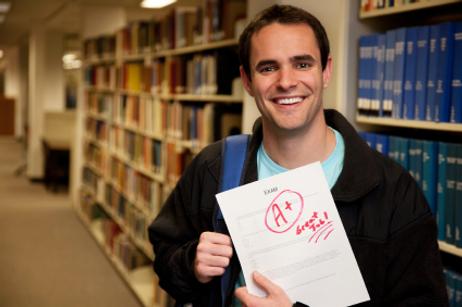Students enter community college with plans to eventually transfer to a four-year university for a number of reasons. The student may have limited funds and will try to save money by getting lower division courses out of the way at community college, before heading to a university to complete major requirements. Some students may not have a high enough GPA at graduation to move directly into the university of their choice, so they take the first year or two of classes at community college until their GPA is high enough for a successful transfer.
No matter what your reason for transferring from community college, success in your academic endeavors is surely your ultimate goal. This article will explore the success rate of community college students that transfer to a four-year institution, as well as some of the factors that help determine performance after transferring.
What is Transfer Shock?
One concern for community college students transferring to four-year institutions is something commonly referred to as "transfer shock" in higher education circles. According to a report at the National Academic Advising Association (NACADA) website, transfer shock refers to the dip in grade point average that is experienced during the first or second semester at a new school. Transfer shock is a concern for educators as well as students, and it may impact the number of transfer students a university may be willing to accept in any given year.
Transfer shock is a very real phenomenon that affects many transfer students and may impact the amount of time it takes them to graduate. Those who experience transfer shock after transferring are more likely to take five years to earn their bachelor's degree, rather than just four.
A number of demographics come into play when determining the likelihood of transfer shock, including age, gender and ethnicity. Some states have conducted their own studies on transfer shock to assist students in this situation and raise their chances of successfully completing their four-year degrees.
Academic Performance of Transfer Students in North Carolina
A study conducted on North Carolina transfer students in 2002 compared the performance of both native and transfer students from North Carolina community colleges. The study found that students who transferred from the community colleges had a similar or better success outcome as native students by the end of their sophomore year. When it comes to major areas of study, transfer students in this research did seem to suffer from a mild degree of transfer shock after their first semester in their major. However, those students did recover quickly and most had similar GPAs to native students after that first semester.
This study was conducted by J. Conrad Glass, Jr. of North Carolina State University and Anthony Harrinton of Central Carolina Community College. Results were published in the Community College Journal of Research and Practice.
Study in Maryland Examines Performance of Transfer Students
Another study conducted by the Maryland Higher Education Commission also looked at the performance of transfer students, but this one did so over a number of academic years. The data compiled for this study did not compare transfer to native students, but it did consider other relevant information, including the number of transfer students who received bachelor's degrees and their cumulative GPAs. The study, published on the Maryland Higher Education Commission website, looked at numerous community colleges as well as four-year universities throughout the state of Maryland to compile the most comprehensive study possible.
The most recent academic year included in this study was 2008-2009. During this year, nearly 9,000 students transferred from community colleges to four-year universities. Of that number, just over 900 went on to earn bachelor's degrees two years after transferring, which was around 10 percent of the total transfer students. The average GPA for those students during their first year after transferring was 2.73.
Iowa Issues Transfer Report
According to a recent report issued by Iowa Western Community College, many students that graduate from this school go on to finish their education at four-year universities nearby. Some of the choices include University of Nebraska, Northwest Missouri State and Buena Vista. The study found that students who have been enrolled at Iowa Western have a plethora of additional education opportunities available to them in a diverse range of study.
Transfer Students Perform as Well as Native Students in Texas
A recent study from the Dallas County Community College District showed that approximately 22 percent of students in four-year institutions are transfers from two-year community colleges, which amounts to around 10,000 former DCCCD students every year. The study also showed little difference between the graduation rate of transfer students and native students, refuting findings from a study in the 1970s that showed transfer students were less likely to complete their education.
The Texas study also looked at some of the factors that improved the rate of success for transfer students. One of the top factors was student persistence. The study found that students who attempted a minimum of 15 credit hours and attended a Dallas community college for at least two semesters had a greater likelihood of succeeding at the university level. Another factor for success was the ability to obtain a scholarship to help with tuition payments for the university. Currently, 18 Texas universities offer some form of scholarship to community college transfer students.
The success of transfer students cannot be underestimated by universities today. With education becoming more expensive, four-year colleges may see more transfer students entering their ivied halls in the near future.
Questions? Contact us on Facebook @communitycollegereview.






















